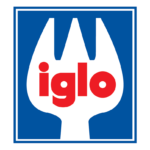Q: What are some differences between sanitary design and Ingress Protection (IP)?
Ingress protection (IP) is an important consideration in the food and beverage industry, but it can be mistaken for sanitary design. IP is used to define protection against liquids like water and solid objects including dust in durable equipment that can withstand high-pressure, high-temperature washdowns. IP ratings, such as IP69, are an indicator of rugged construction, but do not guarantee that a surface meets hygiene standards.
Sanitary design is broader in scope than IP, extending to many other factors beyond safeguards against liquids and dust. Machines with sanitary design can be rated as IP and also adhere to other sanitary standards, including NAMI, NS, ANSI and 3-A.
Q: How does packaging design impact detection capabilities?
Package type is another important factor when selecting an X-ray system. Inspection at the packaging stage provides a final safeguard to ensure food safety and product quality before shipping. Certain packages present unique challenges and require specialized solutions. For example, while peanut butter itself is a uniform product, jar designs with crowns or crevices along the lid can obscure contaminants. Cans with pull tabs present similar difficulties due to hidden areas at the top. These types of packages are often best inspected with side-view X-ray systems, which can see into areas that top-down machines may miss. Ultimately, both the product and the package must be considered together. Eagle offers systems designed for a wide variety of packaging formats, from high-speed flow-wrap lines to multilane operations for larger packages, as well as systems built for harsh washdown environments.
Q: How realistic is real-time traceability and what advantage does it offer?
Real-time traceability is not only realistic, it’s increasingly standard. X-ray inspection technology provides the rare advantage of inspecting every product on the line without slowing production. This means that every item is time-stamped, imaged, and logged as it moves through the machine, creating a full digital trail. When questions arise, whether from a retailer, auditor, or the FDA, manufacturers can trace a single unit back through its production history with speed and precision.
This immediacy becomes especially valuable in cases of product hold, supplier discrepancy, or customer complaint. Instead of relying on handwritten logs or batch-level approximations, teams can isolate issues down to individual production windows or even SKUs, taking swift corrective action and preventing broader fallout. That’s not only helpful for compliance, it’s smart business.
Q: Why is ROI such a common question when it comes to investing in x-ray inspection?
Capital expenditures require clear justification, and ROI often becomes the centerpiece of that discussion. Stakeholders must see tangible proof that a technology investment will drive measurable improvements in quality, productivity, safety, and profitability. Advanced x-ray systems represent a significant investment, so it’s essential to demonstrate how these systems reduce costs, increase throughput, mitigate risk, and increase profit by providing a premium product in ways that justify the expense.
X-ray Inspection Industry Report Insights.Advancements. Solutions.
For comprehensive insights into x-ray inspection, check out our monthly X-ray Inspection Industry Report. Each edition features an in-depth interview with our x-ray inspection experts, addressing frequently asked questions related to technology capabilities, regulatory compliance, and overall food safety. Download the full report below to discover valuable answers and enhance your understanding of the latest trends and best practices in x-ray inspection.
Expert Insights Stay ahead of the Curve with Industry Trends

Get Our Monthly X-ray Inspection Report Sign Up Today
Receive our monthly report on inspection trends and advancements.
"*" indicates required fields

.svg)










